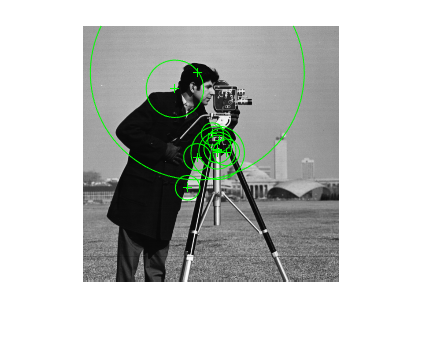BRISKPoints
用于存储 BRISK 相关点的对象
说明
此对象支持在 detectBRISKFeatures 与 extractFeatures 函数之间传递数据。您也可以使用该对象操作和绘制这些函数返回的数据。当需要混合使用非 BRISK 相关点检测器与 BRISK 描述符时,您可以使用该对象以交互方式填充点。
属性
对象函数
plot | 绘制点 |
isempty | Determine if points object is empty |
length | Number of stored points |
selectStrongest | Select points with strongest metrics |
size | Return size of points object |
selectUniform | Select uniformly distributed subset of point features |
select | Select point or region features during code generation |
示例
提示
尽管 BRISKPoints 可包含多个点,但它仍是标量对象。因此,numel(BRISKPoints) 始终返回 1。此值可能不同于 length(BRISKPoints),后者返回该对象包含的实际点数。
参考
[1] Leutenegger, S., M. Chli, and R. Siegwart. BRISK: Binary Robust Invariant Scalable Keypoints, Proceedings of the IEEE International Conference on Computer Vision (ICCV) 2011.
扩展功能
版本历史记录
在 R2014a 中推出
